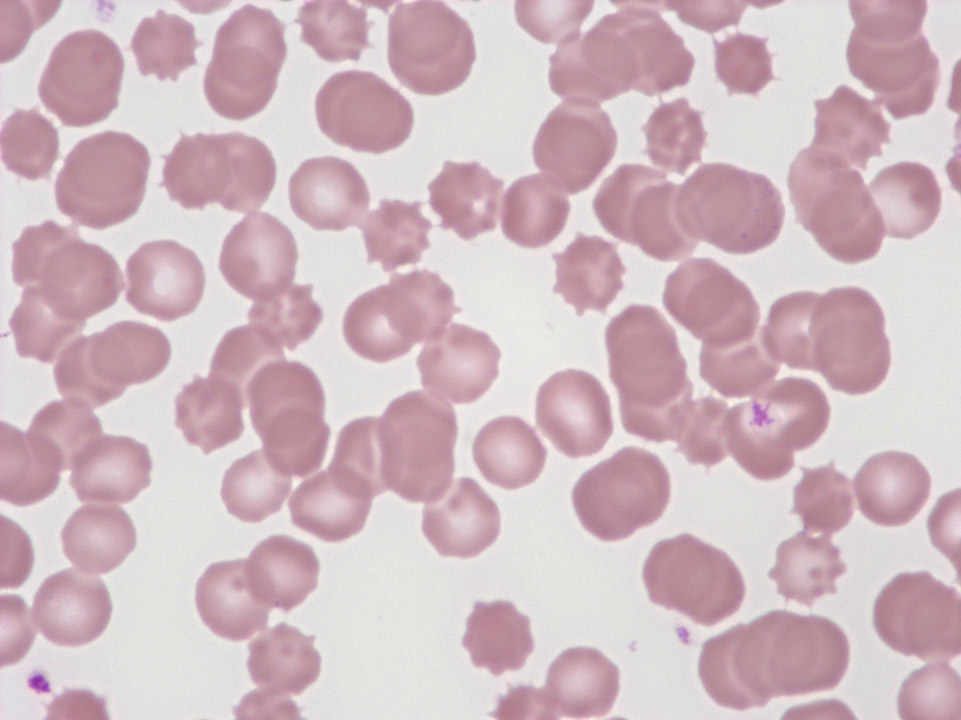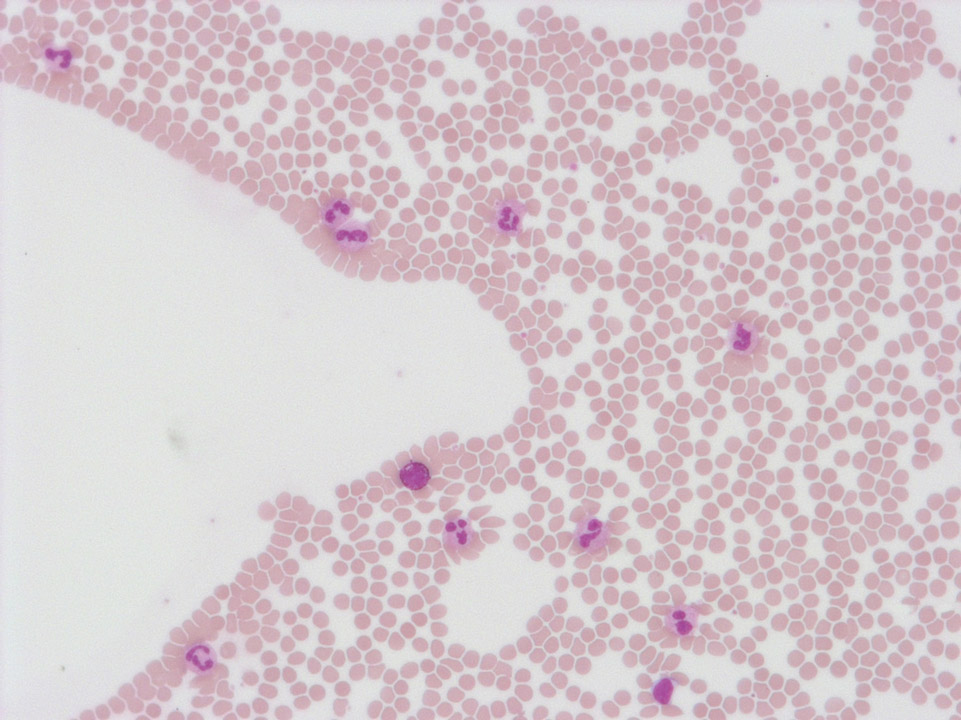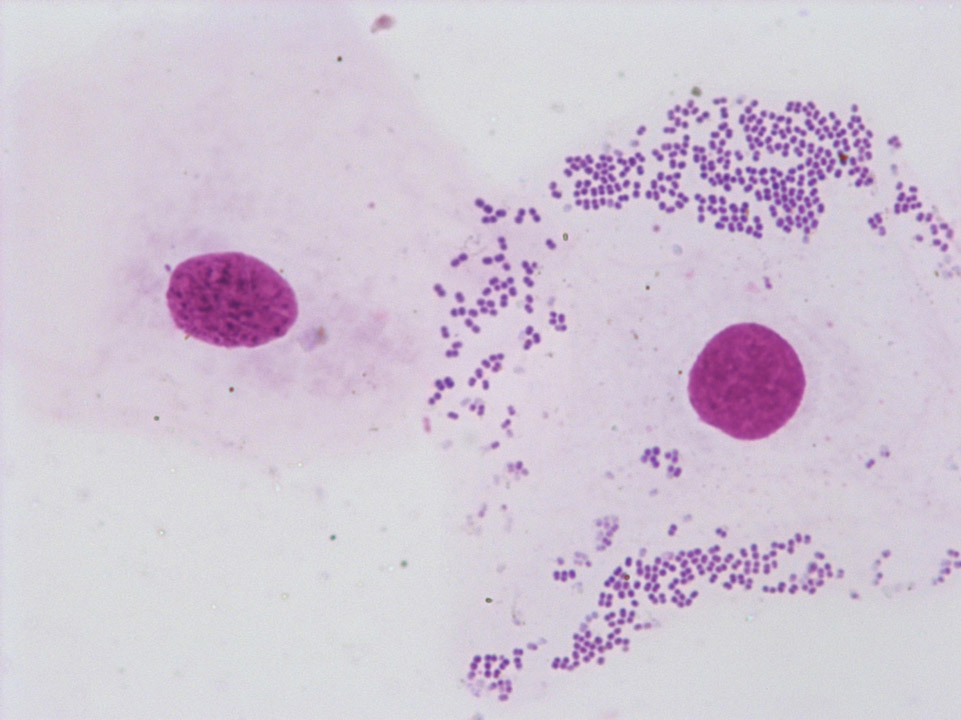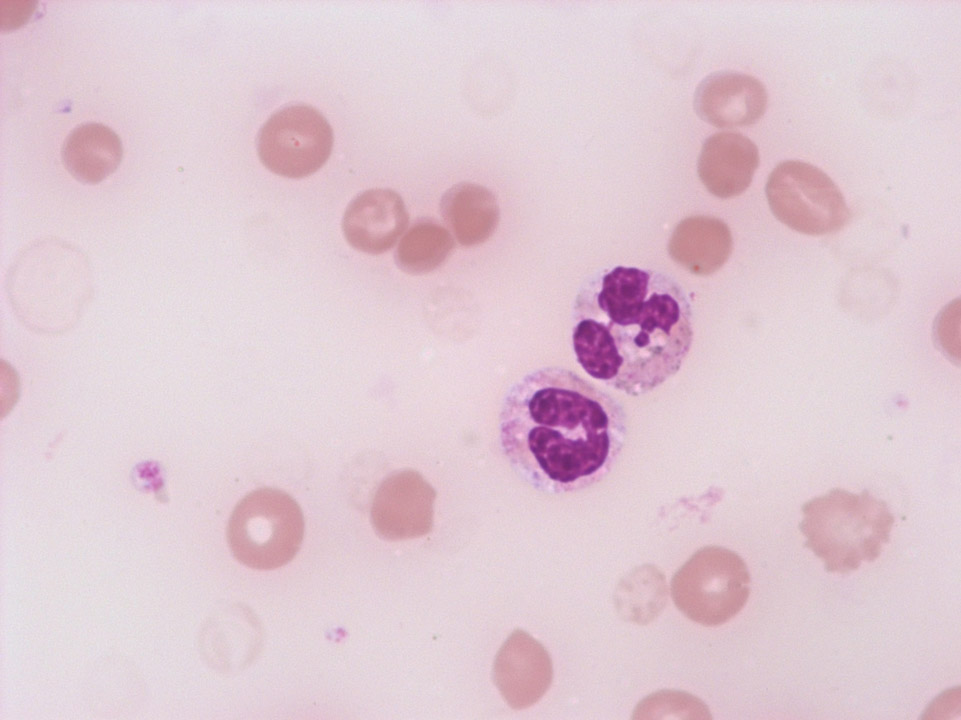Scientific Image Gallery
Welcome to our Scientific Image Gallery. Here you can find real-life examples of cell images, mostly (but not only) from peripheral blood films, that illustrate typical morphologic characteristics pointing to specific conditions or disorders. This constitutes their diagnostic value.
Click on an image to enlarge it and display a short description.
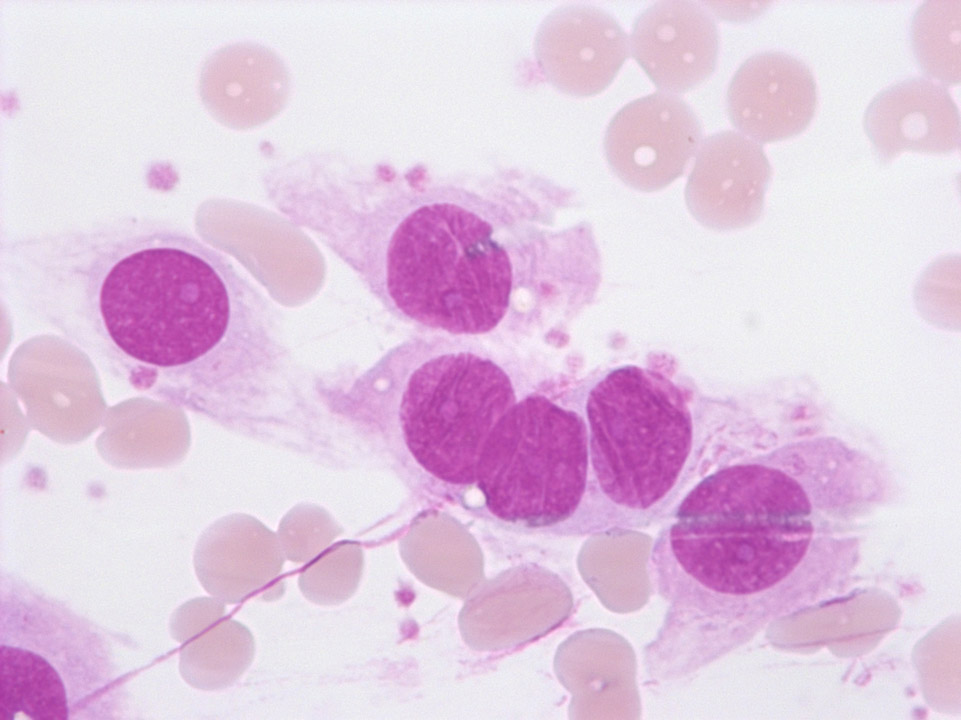
The endothelial cells are part of the vascular wall, which was damaged during venepuncture. (Blood coagulation was activated during the process: on the bottom left a fibrin fibre can be recognised.)
<p>The endothelial cells are part of the vascular wall, which was damaged during venepuncture. (Blood coagulation was activated during the process: on the bottom left a fibrin fibre can be recognised.)</p>
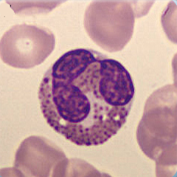
Size: 12-17 µm
Nucleus: usually bilobed with visible filament
Cytoplasm: weekly basophilic containing coarse reddish-orange granulation packing the cytoplasm
Function: Phagocytosis, chemotaxis, mortification of parasites, inhibition of mastcell degranulation, eutralization of histamine
<p>Size: 12-17 µm </p> <p>Nucleus: usually bilobed with visible filament </p> <p>Cytoplasm: weekly basophilic containing coarse reddish-orange granulation packing the cytoplasm </p> <p>Function: Phagocytosis, chemotaxis, mortification of parasites, inhibition of mastcell degranulation, eutralization of histamine</p>
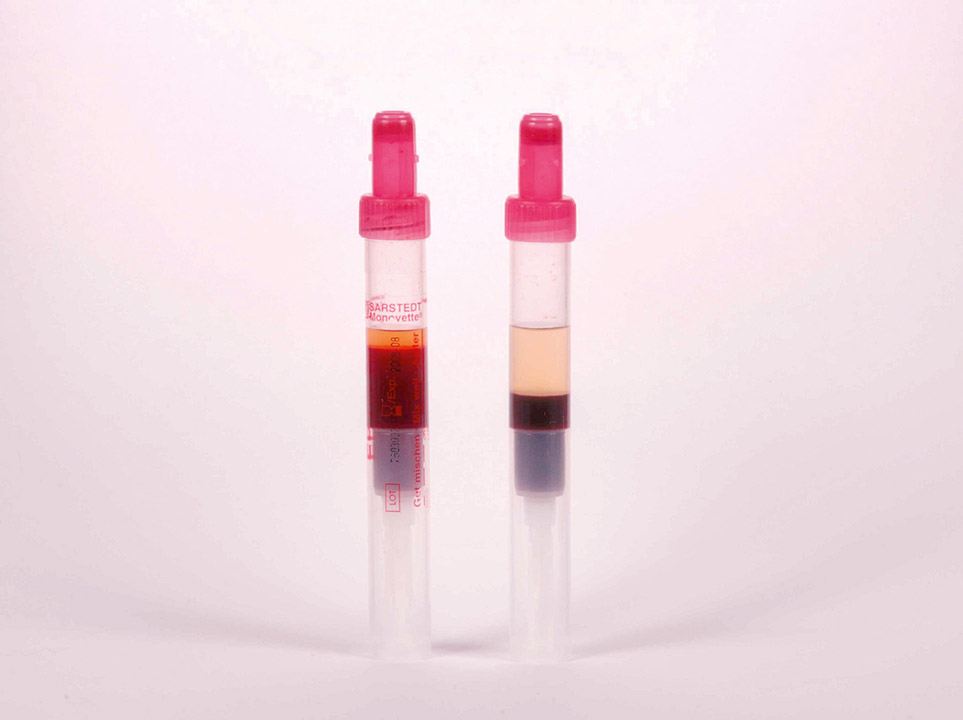
Pronounced erythrocytosis (polyglobulia) can often already be recognised after sedimentation of the red blood cells. Left tube: haematocrit 82%, right tube: haematocrit 39%.
<p>Pronounced erythrocytosis (polyglobulia) can often already be recognised after sedimentation of the red blood cells. Left tube: haematocrit 82%, right tube: haematocrit 39%.</p>
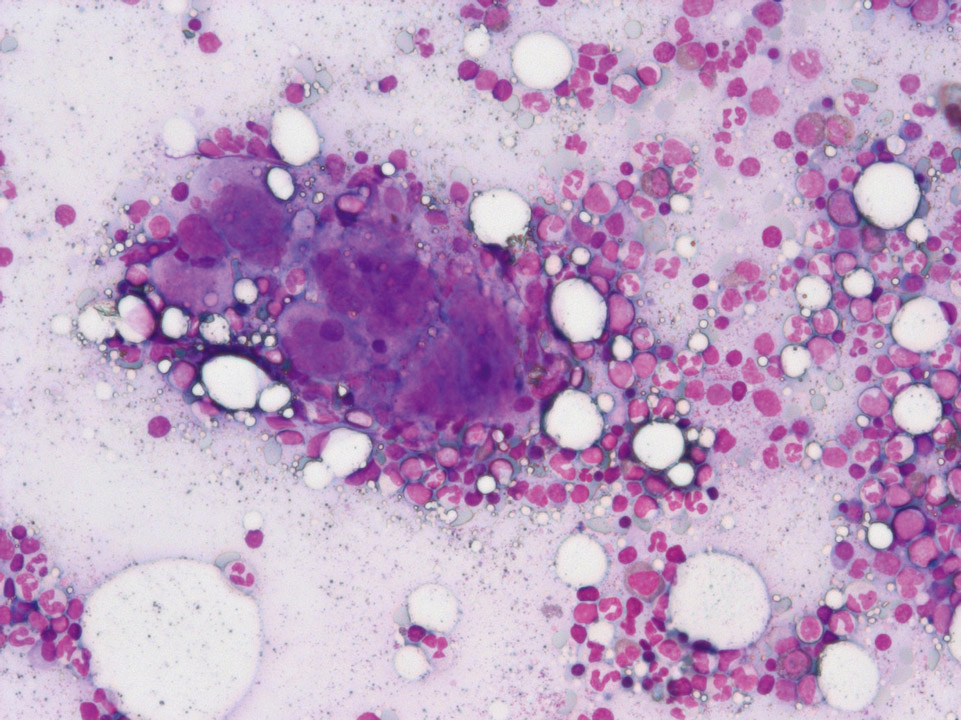
The bone marrow cytology (May-Grünwald-Giemsa stain) of a patient with ET shows a clear increase in exceptionally large megakaryocytes.
<p>The bone marrow cytology (May-Grünwald-Giemsa stain) of a patient with ET shows a clear increase in exceptionally large megakaryocytes.</p>
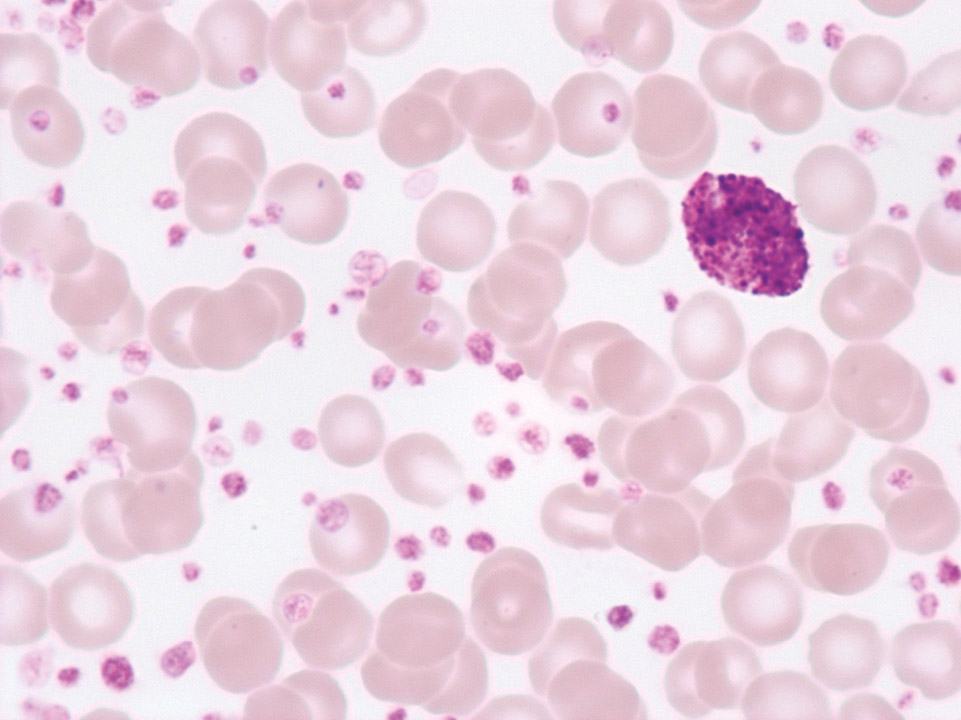
Extreme thrombocytosis (3,400,000/μL) in chronic myelogenous leukaemia (CML, bcr-abl+); on the right a basophilic granulocyte.
<p>Extreme thrombocytosis (3,400,000/μL) in chronic myelogenous leukaemia (CML, bcr-abl+); on the right a basophilic granulocyte.</p>
